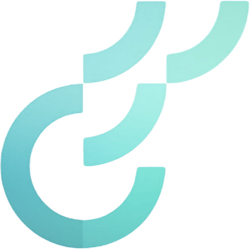What makes Optimizely's Opal AI different?
In a marketing world awash with tools and technologies, it can be difficult to tell which innovations genuinely change how teams work. .
Artificial Intelligence has become the buzzword of the moment, with every platform claiming to offer some kind of 'smart' feature. But when you look a little closer, most of these implementations barely scratch the surface - acting as assistants rather than orchestrators, operating in silos rather than across systems.
That’s why Optimizely’s approach, led by its new AI orchestration layer, Opal, represents something far more transformative. It’s not just adding AI to the experience - it’s rethinking how intelligence connects every part of their digital experience platform.
The Martech Landscape
The marketing technology landscape is vast and ever-expanding. With thousands of tools and platforms claiming to solve similar challenges, the space has become increasingly crowded.
Differentiation is harder than ever, and every vendor is looking for an edge - which, in recent years, has often meant one thing: AI.
The problem with “AI-enabled” Martech
Almost every platform now claims to be “AI-enabled.” In reality, that usually means a chatbot or text assistant has been bolted onto the right hand side of the product interface. Even in the more sophisticated cases, AI is typically limited to using the data within that single system - meaning it can’t connect insights across platforms or automate meaningful cross-functional workflows. The result is fragmented insight, shallow automation, and limited real value.
Introducing Optimizely Opal
This is where Optimizely Opal stands apart.
Opal isn’t just another chatbot or content assistant. It’s a unified AI orchestration layer that sits across Optimizely’s entire Digital Experience Platform (DXP) - connecting insight, action, and automation in a way few (if any) vendors can match.
The recently shared DXP Vision illustrates this clearly: Opal sits at the centre, orchestrating intelligent activity across Systems of Insight and Systems of Action.
![]()
The three pillars of Optimizely’s DXP Vision
Opal is best understood through the lens of Optimizely’s three-layer model: Agent Orchestration, Systems of Insight, and Systems of Action. Together, these form a connected loop where insight informs action, and action fuels deeper insight - all coordinated by AI.
1. Agent Orchestration (Opal)
At the heart of the vision is Agent Orchestration. Opal acts as the DXP’s central intelligence layer - the “brain” that coordinates autonomous and semi-autonomous AI agents. These agents can perform tasks, trigger workflows, and even chain activities together, operating either on a schedule or in response to events.
2. Systems of Insight
Supporting this orchestration are Optimizely’s Systems of Insight - tools like Analytics, Recommendations, RAG, and Customer Data Platform (CDP) data sources. These systems help Opal understand context: what’s happening across channels, why it matters, and how to respond most effectively.
3. Systems of Action
Then come the Systems of Action - the parts of the Optimizely suite where work actually gets done: the CMS, CMP, DAM, Experimentation, and Personalisation tools. Unlike most AI tools that can only advise, Opal can act directly within these systems, turning intelligence into tangible outcomes.
What makes Opal different?
Transitioning from theory to practice, the differentiators become clear.
- Integrated Intelligence: Opal unites data across the entire suite, not just within one product.
- Unified Execution: Because the orchestration layer and action systems share the same foundation, agents can perform deep, coordinated actions.
- True Orchestration: Opal doesn’t just make recommendations - it executes and automates multi-step workflows intelligently.
- AI with Context: Having visibility into both the insight and action layers allows Opal to make better-informed, business-aware decisions.
Real examples of what this enables
When applied, this orchestration model unlocks capabilities that go well beyond typical AI assistance:
- Automated content audits and compliance checks across entire digital estate.
- Intelligent experiment suggestions based on previously observed performance data.
- Creation of GEO- and AEO-optimised content at scale.
- Seamless automation across systems - for example, building a campaign in the CMP, publishing in the CMS, and analysing performance via the CDP - all triggered automatically by defined rules or results.

The bigger picture
Optimizely’s approach represents a fundamental shift. While many DXP vendors add AI features into their existing products, Optimizely is building AI as the connective tissue - the layer that understands, decides, and acts. This positions Opal not just as a productivity tool, but as the foundation for truly autonomous, insight-driven digital experience orchestration.
We make technology work for everyone

